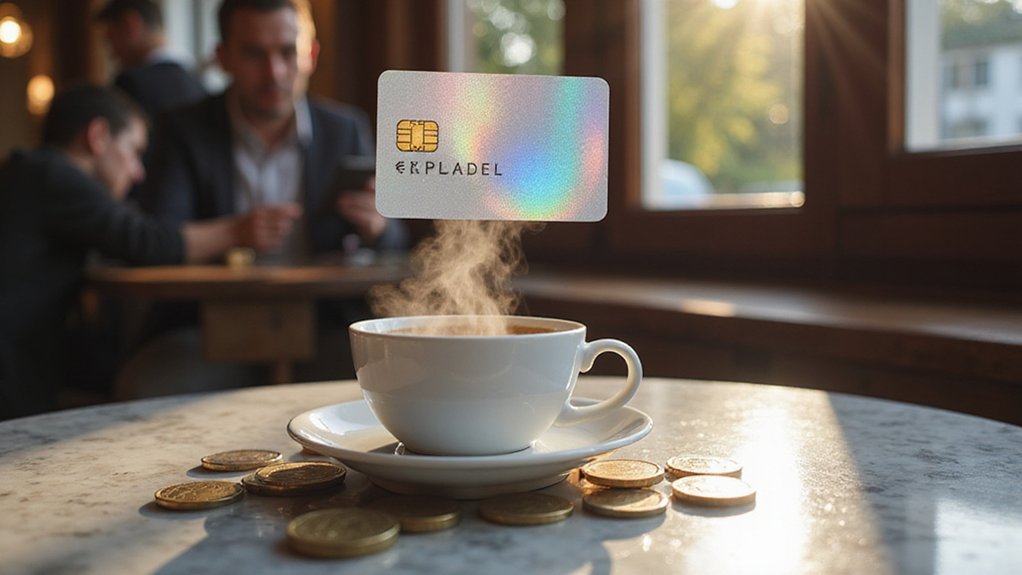While European consumers once fumbled for coins to buy their morning espresso, they now increasingly tap crypto cards for purchases under ten euros—a shift that would have seemed fantastical just years ago yet now represents 45% of all crypto card transactions across the continent.
The numbers tell a compelling story of digital disruption in the most mundane corners of commerce. With a 15% surge in newly ordered crypto cards across Europe in 2025, consumers are abandoning traditional cash-based micro-spending for blockchain-backed alternatives. The average crypto card transaction hovers at 23.7 euros—notably lower than conventional bank cards’ 33.6 euros—suggesting these digital instruments have found their niche in the domain of everyday necessities rather than luxury purchases.
Grocery shopping dominates this crypto revolution, accounting for 59% of transactions and closely mirroring the ECB’s 54% benchmark for regular expenses. Yet dining and bar expenses claim an outsized 19% share, surpassing traditional in-person food spending patterns—perhaps because ordering another round feels less guilt-inducing when paid with digital assets that still carry an air of “play money” despite their very real value.
Digital assets feel like play money at the bar, making that extra round psychologically easier to justify despite real financial consequences.
The online dimension proves particularly revealing: 40% of crypto card transactions occur digitally, nearly doubling the eurozone’s 21% average for all card payments. This preference stems partly from crypto cards’ superior processing capabilities—they offer near-instant settlement and reduced fees for transactions under fifty euros, areas where traditional banking infrastructure stumbles under the weight of disproportionate processing costs.
Traditional banks face an uncomfortable reality: they’re being outmaneuvered by upstart financial technology in the very market segment they’ve historically dominated through sheer ubiquity. Digital natives and tech enthusiasts, predictably, drive this adoption wave, drawn to payment methods that align with their blockchain-curious worldview. However, this technological enthusiasm occurs against a backdrop where only 14% of crypto startups have successfully maintained stable banking relationships without facing account closures. This shift toward practical crypto applications aligns with broader industry trends where institutional adoption continues to drive market maturation beyond mere speculation.
The regulatory landscape adds complexity to this transformation. While crypto card usage flourishes across multiple European jurisdictions, evolving frameworks threaten disruption—75% of Europe’s virtual asset service providers may lose registration by mid-2025 due to grandfathering policies.
This regulatory uncertainty creates an intriguing paradox: consumers enthusiastically embrace crypto payments even as the infrastructure supporting them faces potential upheaval, suggesting either remarkable faith in the technology’s permanence or blissful ignorance of impending regulatory challenges.









